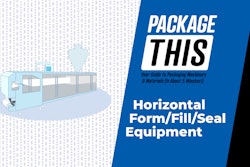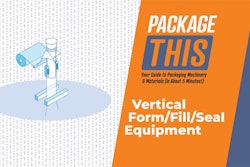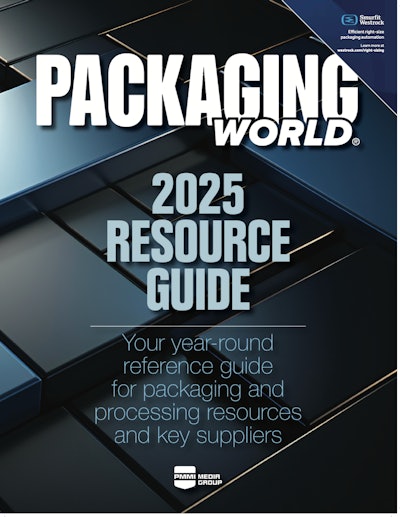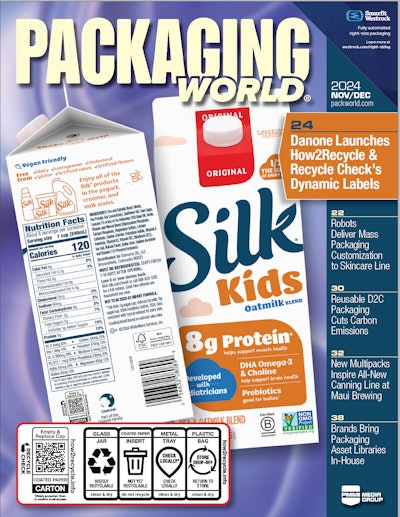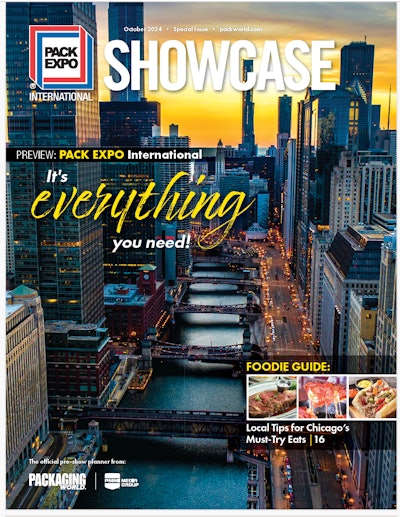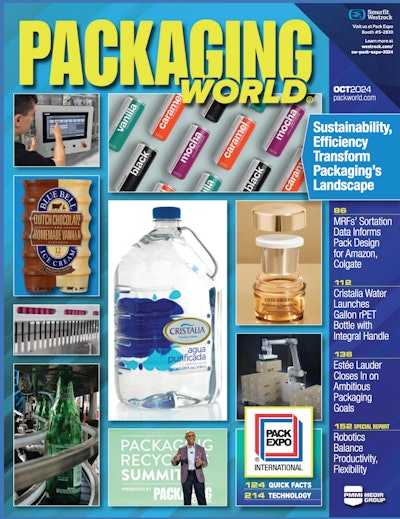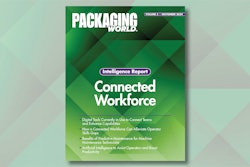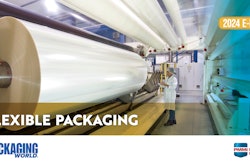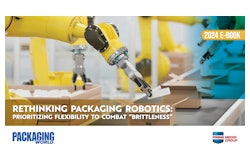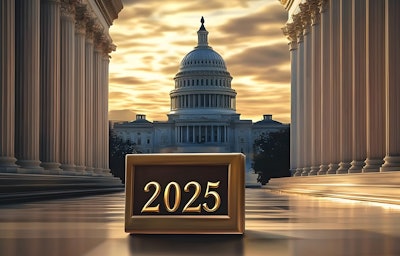
Packaging World:
What do you anticipate will be the major packaging policy issues for 2025?
Andy Hackman:
 AMERIPEN Principle Lobbyist, Andy Hackman of Serlin Haley
AMERIPEN Principle Lobbyist, Andy Hackman of Serlin Haley
We’ve seen EPR proposals incorporate many issues above and beyond funding. Lawmakers are likely to continue to approach EPR with a variety of goals and opportunities in mind. We expect to see other packaging issues, such as labeling mandates, recycled content goals, source reduction, and toxics provisions, rolled into EPR. Furthermore, fiscal deficits and funding issues in states are likely to spark bipartisan interest in any program that could relieve the state governments and local municipalities of financial burden.
In addition to their anticipated inclusion in EPR proposals, we believe labeling and PCR [post-consumer recycled] content mandates will continue to pop up as standalone legislation in states that may not be set to pass EPR.
Bans and restrictions on materials that are deemed “toxic” are likely to take center stage as well. PFAS [per- and polyfluoroalkyl substances] in packaging will continue to be a flashpoint, but inclusion of more common packaging materials like PVC [polyvinyl chloride] and PVDC [polyvinylidene chloride]—both targeted in 2024 legislation in California—are likely to be hotly debated, with industry playing the role of educator in terms of explaining what these materials do and why they play an important role in issues that span public health, food waste, and carbon footprint goals.
AMERIPEN has a great video that outlines the five packaging policies packaging professionals should know and tips for companies to get prepared.
What impact could the recent election have on packaging policy in 2025? Will we see similarly high activity, or will things slow down now that the election is over?
Hackman:
While the 2024 elections certainly presented a shift at the federal level, we anticipate steady and continued interest in and traction of packaging policy at the state level in the near future. Shifts in power from one party to another were less pronounced at the state level than they were federally and may not “make or break” any planned packaging legislation.
 | Read this related column, “Key Lessons from Early EPR Adopters” |
At the national level, we may see a shift in some of the burgeoning conversations around packaging policy that we’ve heard over the past few years. The incoming administration’s willingness, or reluctance, to work with or empower certain government agencies, such as the EPA, may dent the prospect of further hearings or legislation on packaging at the federal level.
A few states passed EPR studies in 2022 and 2024. What does this mean for EPR in 2025?
Rob Keith:
 Rob Keith, Policy and Membership Director, AMERIPEN
Rob Keith, Policy and Membership Director, AMERIPEN
All of the states that passed EPR legislation required a needs assessment, so this approach to conduct one before passing legislation is simply a desire to get data upfront to help craft legislation specific to the states’ unique needs and programs.
As EPR kicks off in a few states this year, what big changes or insights should the industry consider as we move from rulemaking into implementation?
Keith:
2025 is the year that Oregon and Colorado are expected to begin implementation of EPR. July 1, 2025, is when both states begin the statutory obligations of their EPR programs, and fees are due. While we don’t yet have proposed fees, Oregon has required they are made public one month in advance (June).
It has taken nearly three years since the legislation was passed to implement them, as a lot of details were worked out during the rulemaking process. AMERIPEN and our members have dedicated significant time and resources, providing input into the regulatory processes for these laws. As we move toward implementation of the first two U.S. EPR laws, we believe these efforts will inform the regulatory process for the laws in Maine, Minnesota, California, and any future EPR laws.
The EPA recently published a plastic pollution strategy that calls for increased engagement in EPR. Does this mean federal EPR will likely become a focus?
Hackman:
While the uptick in federal interest in EPR in 2024 was an interesting development, and AMERIPEN testified before Senate on these issues, we believe the 2024 election, plus the retirement of U.S. Sen. Tom Carper, who had a keen interest in fostering a federal EPR conversation, as chair of the Senate Environment and Public Works committee, could mean that there could be less focus on federal EPR in 2025. While it’s unlikely that there will be actual progress on a federal EPR bill, it seems likely that EPR language may feature in larger, omnibus-style packaging legislation, albeit without much likelihood of gaining political traction.
AMERIPEN is a strong proponent of “evidence-informed” policy. What does that mean, and how does the organization use science and data to drive policy recommendations?
Keith:
When AMERIPEN was launched over a decade ago, our founding members enshrined into our bylaws the expectation that any policy positions and advocacy work we do come from an informed position. Our members want us to offer proactive and data-driven solutions to policy rather than simply act from a defensive stance. Thus, much of our committee work is spent evaluating policy proposals, looking for best practices, and researching the science behind concerns. We frequently work with academics and fund peer-reviewed studies.
This approach is widely referred to as evidenced-based policymaking and is an objective of both our federal government as well as many European governments.
 | Read this related column, “5 Lessons in Eco-Modulation” |
Not only do we want the data upfront so we can decide what policy interventions will help us reach our goals, but we also want to put measures in place at the outset of a program to help us assess the impact of legislation toward the policy’s stated goals. So, for example, if the goal of EPR is to improve the recycling and composting systems through increased funding and aligned packaging design, we want to ensure the incentives put in place have been proven effective in doing so in other locations, and we want to ensure we set up reporting and programmatic processes so we can evaluate success within a few years.
What advice do you offer to the packaging industry as we start 2025?
Keith:
Continued engagement in ongoing legislative and regulatory processes at the state level continues to be vital. While five states have full EPR programs in the works, there are dozens of other proposals and bills out there that will be introduced and reintroduced in 2025.
We should be prepared for things to move fast, starting in January, with many EPR proposals that weren’t passed in 2024 being introduced as well as new legislation in states where EPR hasn’t previously been an issue. Industry involvement and advocacy starting at the stakeholder process phase and continuing through the legislative and regulatory processes is still our best bet for ending up with EPR programs—and other packaging regulations—that are workable and fair and that will actually improve recycling systems. It’s up to packaging organizations like AMERIPEN to advocate for workable solutions such as shared responsibility and to effectively communicate why other provisions aren’t feasible. PW
AMERIPEN, a material-neutral trade association for the packaging industry, is focused on the intersection of packaging policy and the environment and educates the industry on the value of packaging.

.OvcZHe3G0k.jpg?crop=focalpoint&fit=crop&fp-x=0.5&fp-y=0.5&h=67&w=100&auto=format%2Ccompress&q=70)


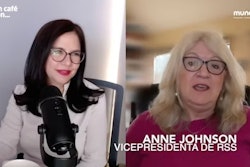

%20REV2.wabPeUjAvt.jpg?crop=focalpoint&fit=crop&fp-x=0.5&fp-y=0.5&h=167&w=250&auto=format%2Ccompress&q=70)

